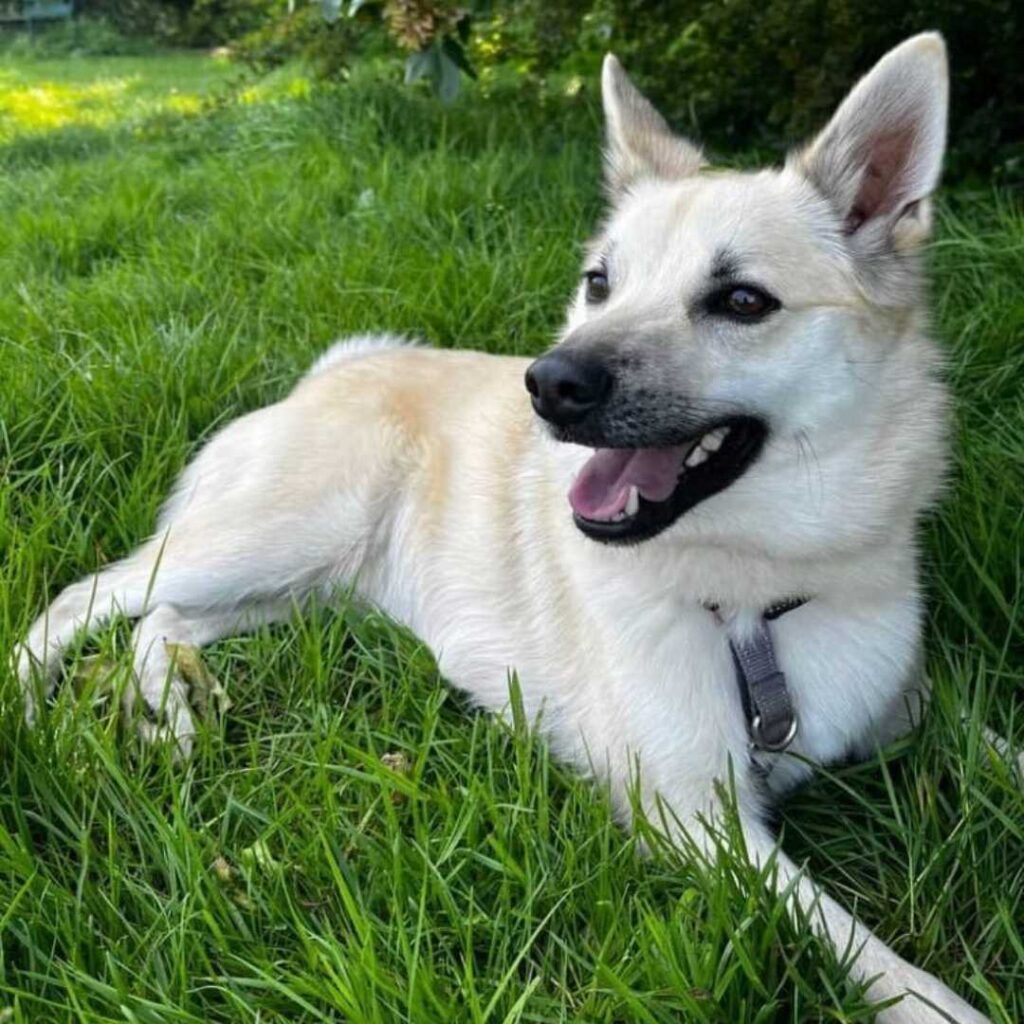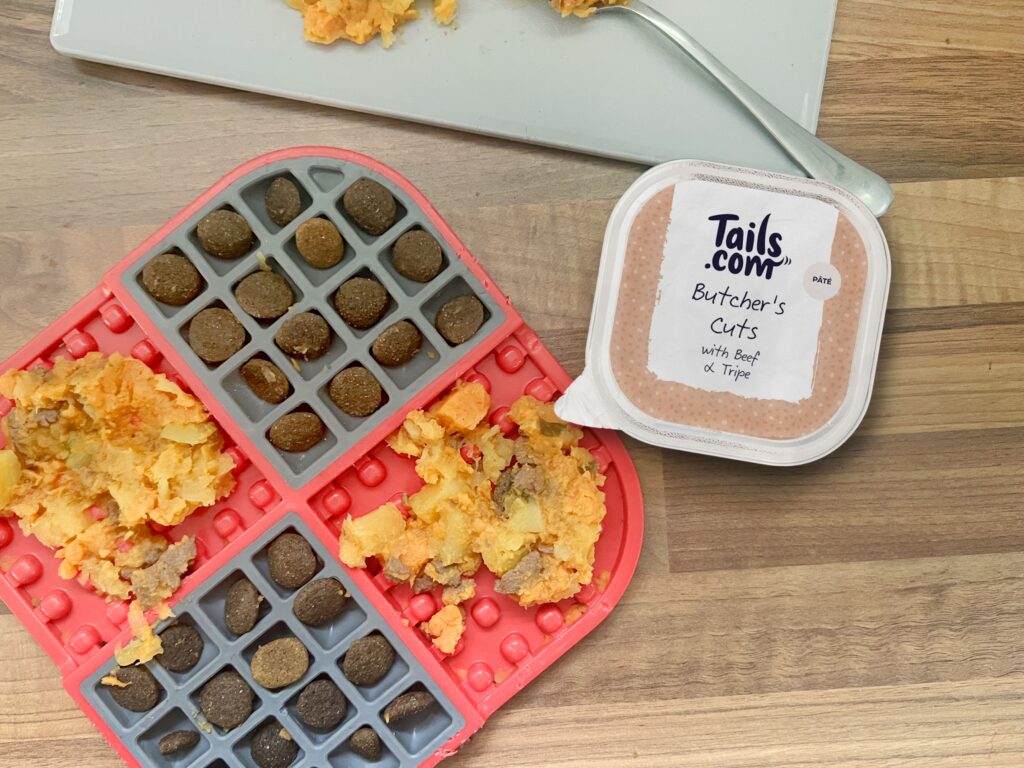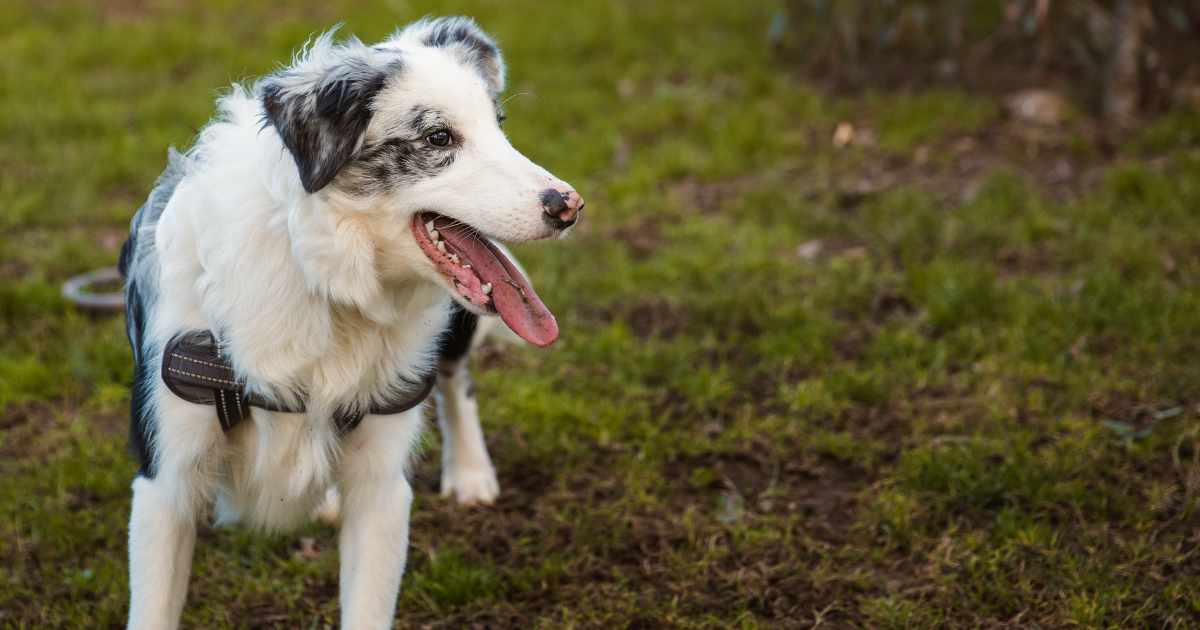We’ve all heard the old adage – “a tired dog is a happy dog” – and lately, I’ve heard it a lot. Like most of these sayings, there’s more than a grain of truth in it. But too much exercise can also be harmful. So, how long should you walk your dog for?
A lot of dogs don’t get enough exercise, or enough appropriate exercise for their age, breed, size or individual natures. This often means by increasing their daily exercise, you can help reduce behaviour problems that arise from boredom, lack of enrichment, or them wanting more quality time exploring the great outdoors with their owner.
However, looking for peace and quiet from a young, enthusiastic and bouncy dog through frequent trips out and walks or high exercise levels in the hope they’re so exhausted they’ll sleep, isn’t a good idea.
A tired dog isn’t a happy dog?
- More exercise = more energy. Exercise makes you fit. It’s why we go to the gym, do yoga, run marathons etc. More exercise makes you fitter – and it’s the same for your dog. All you’ll do in the long term is create a canine athlete who needs more and more exercise. And maybe even more exercise than you can keep up with if you have hopes of tiring them out! This can very quickly become an endless – and exhausting – cycle for you.
- A tired dog is not a happy dog. Consider whether being exhausted makes you happy. Think about how you feel when you’ve had the kind of day where you never stop, you’re rushing around all over the place, with things coming at you from all sides. By the time you stop, you’re definitely not relaxed. Physically tired, yes, but mentally you’re still buzzing, and your stress levels are high. You can’t settle down, and often get frustrated by things that seem small. Our dogs are the same – they can get overtired and find things more challenging.
- Injury or pain risks. In young dogs or older dogs, overexercising (especially high energy repetitive activities such as ball throwing) can cause pain and/or lasting injury. While we might think our teenage dog is fit and healthy, they’re still growing and developing, and we need to be extra careful of their joints. If they aren’t showing signs of discomfort in the moment, we assume they’re fine, but that’s often not the case. Lasting injuries can happen when a dog’s overdone it, and many young dogs will willingly overdo things for the sake of fun, because they don’t understand longterm impacts. And remember, pain also affects behaviour.

Is walking my dog enough?
Don’t get me wrong. Exercise is needed every day for all our dogs, but it needs to be the kind of exercise they enjoy. And daily walks aren’t just about physical exercise either – a change of scenery, fresh air, interesting smells, and one to one time with their person all are important things for dogs.
Variety is key. A walk that includes different terrain, some on lead and some off lead time, interactive games they enjoy, perhaps a spot of training, fits the bill nicely.
While two hours running up hills or around the streets at a jogging pace twice a day, or a session of repetitive ball throwing with the ball launcher, may well produce a physically exhausted dog… They won’t be a happy one like the old saying has led you to believe.
So what is the answer?
Teach your dog to relax and chill as part of your life skills training – ideally starting from the early days of your life together.
Spend time each day with your dog doing very little. Sit and read while they chew a toy or even their daily dental chew. Binge watch your favourite TV series – while your dog hangs out beside you doing something rewarding but calm – such as lickimats or snuffle mats.
Get inspiration for LickiMat recipes from some of our Facebook group members, or give our DIY snuffle ball a go.

Plan some quiet walks instead of high excitement ones. Go on a sniffari or scatter some treats down for them to sniff out.
Train relaxation as a key part of your dog’s day.
How much sleep does my dog need?
This does vary by age and breed. But as a rough guide, puppies need around 18-20 hours of sleep a day and 10-14 for adults. That sleep should be a mixture of naps and dozes, and solid, deep sleep periods. If that doesn’t describe your dog, instead of doing more, you may want to consider calming things down and doing a bit less.
Find out more about dogs and sleep.
You need to find a sensible balance – everyone needs to stretch their legs, get some fresh air and a change of scenery. Everyone feels happier if they’ve done something, solved a problem, or done a bit of work. And some dogs by merit of breed, type, and age are more active than others and need more out and about activities and enrichment. But no one needs to be physically shattered or mentally frazzled at the end of each day.
So let’s change the saying to “a relaxed dog is a happy dog”.


I have found these tips and information extremely helpful. Thank you .
We’re so pleased to hear that, Pam! 💙
Very helpful blog, My dog is very lazy. if i take him for exercise he made face like very sad. Can you suggest me some trick through which he can do exercise. Hope you will answer my question.
Hi Natasha, physical exercise doesn’t always have to be the only way to keep them entertained – you can also try enrichment puzzles and games to train their brain 😊 You can try our frozen LickiMat recipes (which you can find here on our blog), or even scatter food in the garden, or play hide and seek with their kibbles for them to find in your home 😍
Any advice for a dog that no longer likes to go out for walks. She is very noise sensitive and has gradually got worse. When she does go out she will sit down if she doesn’t want to where you want to go.
Hi Ali, we’re sorry to hear that your dog no longer enjoys her walks – first point of call is a checkover at your vet, they can take a good look over her and check whether they may be anything bothering her. From there, we’d also suggest a behaviourist who can work to help her get back to loving her time outside again 😊
Thank you Samantha for your advice regarding a dog no longer enjoying walks. My chug also refusing walks. Informative post.
Will try enrichment puzzles, she enjoys her licky mat and hide/seek games. Vet advice or behaviourist will try if refusing to walk does not improve.
Found these information and tips very helpful. Thank you for this amazing blog.
Very informative blog regarding exercise of dogs. Thankyou so much for this.
Very interesting and helping
Again very informative, thank you. My dog is 15 and pretty healthy apart from being deaf so have to keep her on the lead otherwise she can wander off and unless she is actually looking at me I find it difficult to have much control of her. Any brilliant ideas would be useful
Very informative article thank you. Dino and Freya get walked Mondy to Friday, 2hrs approx each day, their rest days are Saturday and Sunday, works for us.
Relax when they have a dental chew 🤣 that would last all of 30 seconds
🤭 Some things are too good to wait around for!